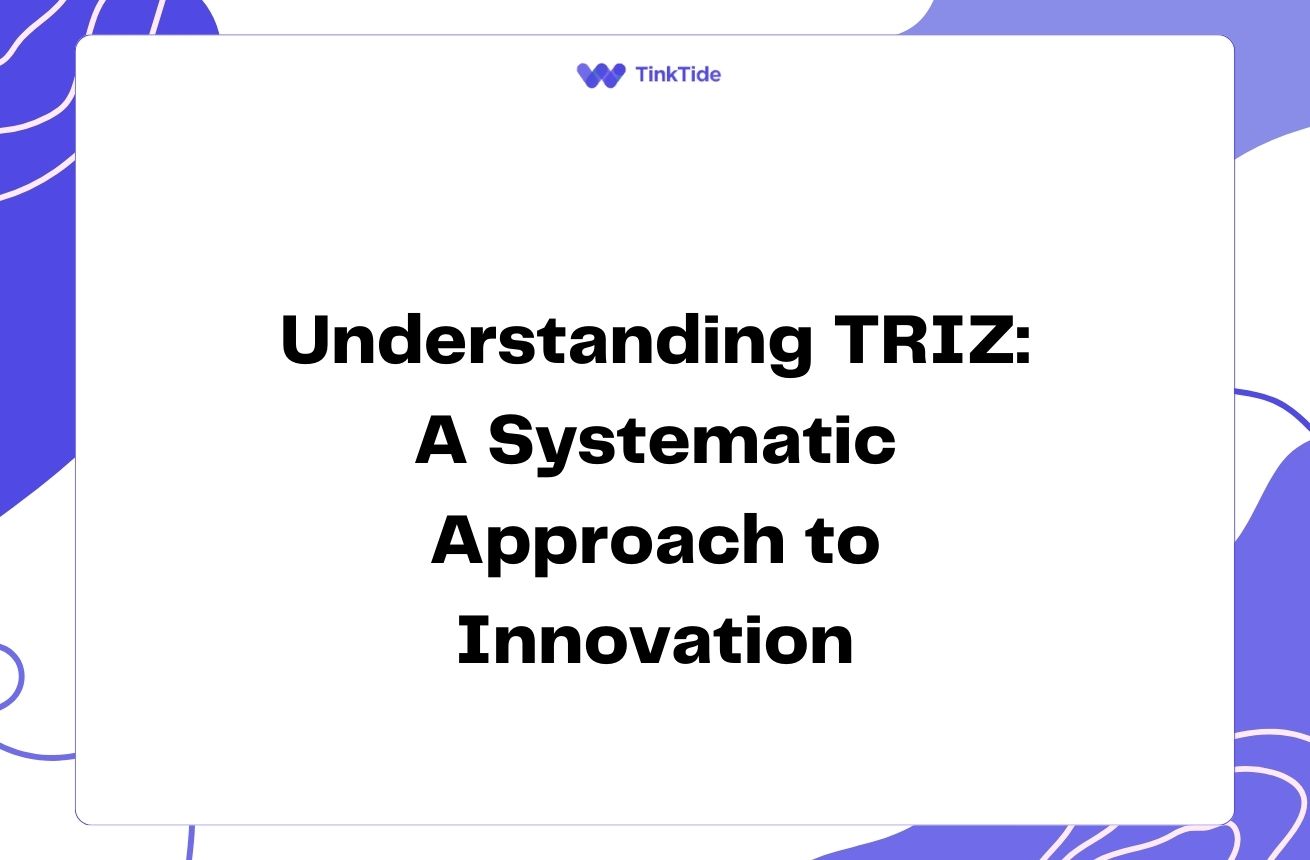Visual Thinking for Customer Retention: Boost Your Strategy
Understanding Visual Thinking in Customer Retention
Visual thinking is a powerful tool for developing and implementing customer retention strategies. By using visual elements to represent complex ideas, businesses can gain new insights and communicate more effectively with their teams and customers.
When applied to customer retention, visual thinking allows you to map out customer journeys, identify pain points, and create engaging experiences that keep customers coming back. This approach can lead to more innovative solutions and a deeper understanding of your customers' needs.
Research shows that visual content is processed 60,000 times faster than text, making it an ideal method for brainstorming and strategy development. By leveraging this cognitive advantage, you can streamline your retention efforts and create more impactful strategies.
Key Benefits of Visual Thinking in Retention Strategies
Incorporating visual thinking into your customer retention approach offers several advantages:
- Enhanced clarity and communication of complex retention concepts
- Improved team collaboration and idea generation
- Easier identification of patterns and trends in customer behavior
- More engaging and memorable presentations to stakeholders
- Increased ability to spot gaps and opportunities in current strategies
Visual Thinking Techniques for Customer Retention
Several visual thinking techniques can be particularly effective for developing customer retention strategies:
1. Mind Mapping: Create a central hub representing your retention goal, then branch out with related ideas and strategies. This technique helps in organizing thoughts and seeing connections between different aspects of your retention plan.
2. Customer Journey Mapping: Visualize the entire customer lifecycle, from acquisition to loyalty. This helps identify key touchpoints and opportunities for improving retention at each stage.
3. Empathy Mapping: Develop a visual representation of your customers' thoughts, feelings, and behaviors. This technique enhances understanding of customer motivations and pain points, leading to more targeted retention strategies.
4. Infographics: Use data visualization to present key retention metrics and trends. Infographics can make complex data more digestible and actionable for your team.
Implementing Visual Thinking in Your Retention Strategy
To effectively implement visual thinking in your customer retention efforts, follow these steps:
- Gather relevant data on customer behavior and existing retention metrics
- Choose appropriate visual thinking techniques based on your specific goals
- Conduct collaborative brainstorming sessions with your team using visual methods
- Create visual representations of your retention strategies and customer insights
- Use these visuals to guide decision-making and strategy refinement
Tools for Visual Thinking in Customer Retention
Several digital tools can enhance your visual thinking process for customer retention:
1. MindMeister: An online mind mapping tool that's great for collaborative brainstorming and strategy development.
2. Lucidchart: A versatile diagramming tool that's perfect for creating customer journey maps and process flows.
3. Canva: An easy-to-use design platform for creating infographics and visual presentations of your retention strategies.
4. Miro: A collaborative online whiteboard platform that's ideal for remote teams working on visual thinking projects.
Measuring the Impact of Visual Thinking on Retention
To assess the effectiveness of your visual thinking approach to customer retention, consider these metrics:
- Customer Retention Rate: Track changes in retention rates after implementing visual strategies
- Customer Lifetime Value: Measure increases in CLV as a result of improved retention efforts
- Net Promoter Score: Monitor changes in customer satisfaction and loyalty
- Team Engagement: Assess improvements in team collaboration and idea generation
- Strategy Implementation Speed: Evaluate how quickly new retention initiatives are developed and launched
Common Challenges and Solutions
While visual thinking can greatly enhance customer retention strategies, there are some challenges to be aware of:
1. Resistance to Change: Some team members may be hesitant to adopt new visual thinking methods. Address this by providing training and showcasing the benefits through pilot projects.
2. Overcomplication: It's easy to create overly complex visuals. Combat this by focusing on clarity and simplicity in your visual representations.
3. Data Overload: With access to so much customer data, it can be tempting to include everything. Instead, focus on the most relevant metrics and insights for your retention goals.
4. Lack of Follow-Through: Ensure that insights gained from visual thinking exercises are actually implemented by creating clear action plans and assigning responsibilities.
Address common questions
Here are some frequently asked questions about using visual thinking for customer retention strategies:
How can visual thinking improve customer retention?
Visual thinking enhances customer retention by providing clearer insights into customer behavior, facilitating better communication within teams, and enabling more engaging presentations of retention strategies. It helps identify patterns and opportunities that might be missed with traditional text-based approaches.
What types of businesses can benefit from visual thinking in retention strategies?
Businesses of all sizes and industries can benefit from visual thinking in retention strategies. It's particularly useful for companies with complex customer journeys, large amounts of data to analyze, or teams that need to collaborate on retention initiatives.
How long does it take to see results from implementing visual thinking in retention strategies?
The timeline for seeing results can vary depending on the specific strategies implemented and the nature of your business. However, many companies report seeing improvements in team collaboration and strategy development within weeks of adopting visual thinking techniques. Measurable improvements in customer retention metrics typically follow within 3-6 months.
Do I need artistic skills to use visual thinking effectively?
No, artistic skills are not necessary for effective visual thinking. The focus is on clear communication and representation of ideas, not artistic merit. Many digital tools offer templates and easy-to-use interfaces that make creating visuals accessible to everyone.
How can I convince my team to adopt visual thinking for our retention strategies?
To convince your team, start by showcasing examples of successful visual thinking applications in retention strategies. Conduct a small pilot project to demonstrate the benefits firsthand. Provide training and resources to help team members feel comfortable with the new approach. Emphasize how visual thinking can make their work more efficient and effective.
Provide additional resources
The Power of Visual Thinking in Business
Harvard Business Review article on the benefits of visual thinking in various business contexts
Customer Retention Strategies That Work
Forbes article outlining effective customer retention strategies
Visual Thinking: Empowering People & Organizations through Visual Collaboration
Book by Willemien Brand on visual thinking techniques and applications
Customer Journey Mapping 101
Nielsen Norman Group guide on creating effective customer journey maps
The Science of Visual Thinking
Scientific American article exploring the cognitive basis of visual thinking
Summarize key takeaways
Visual thinking is a powerful tool for developing and implementing effective customer retention strategies. By leveraging techniques such as mind mapping, customer journey mapping, and infographics, businesses can gain deeper insights into customer behavior and create more engaging retention initiatives.
The benefits of visual thinking in retention strategies include improved team collaboration, clearer communication of complex ideas, and the ability to identify patterns and opportunities more easily. While there may be challenges in adoption, the potential impact on customer retention and overall business success makes it a valuable approach to consider.
Start incorporating visual thinking into your customer retention efforts today. Experiment with different techniques and tools to find what works best for your team and customers. By doing so, you'll be well on your way to developing more innovative and effective retention strategies that keep your customers coming back.
Elevate Your Customer Retention with Visual Thinking
Ready to transform your retention strategies? Start your free trial of our visual collaboration platform today.
Start Your Free Trial

